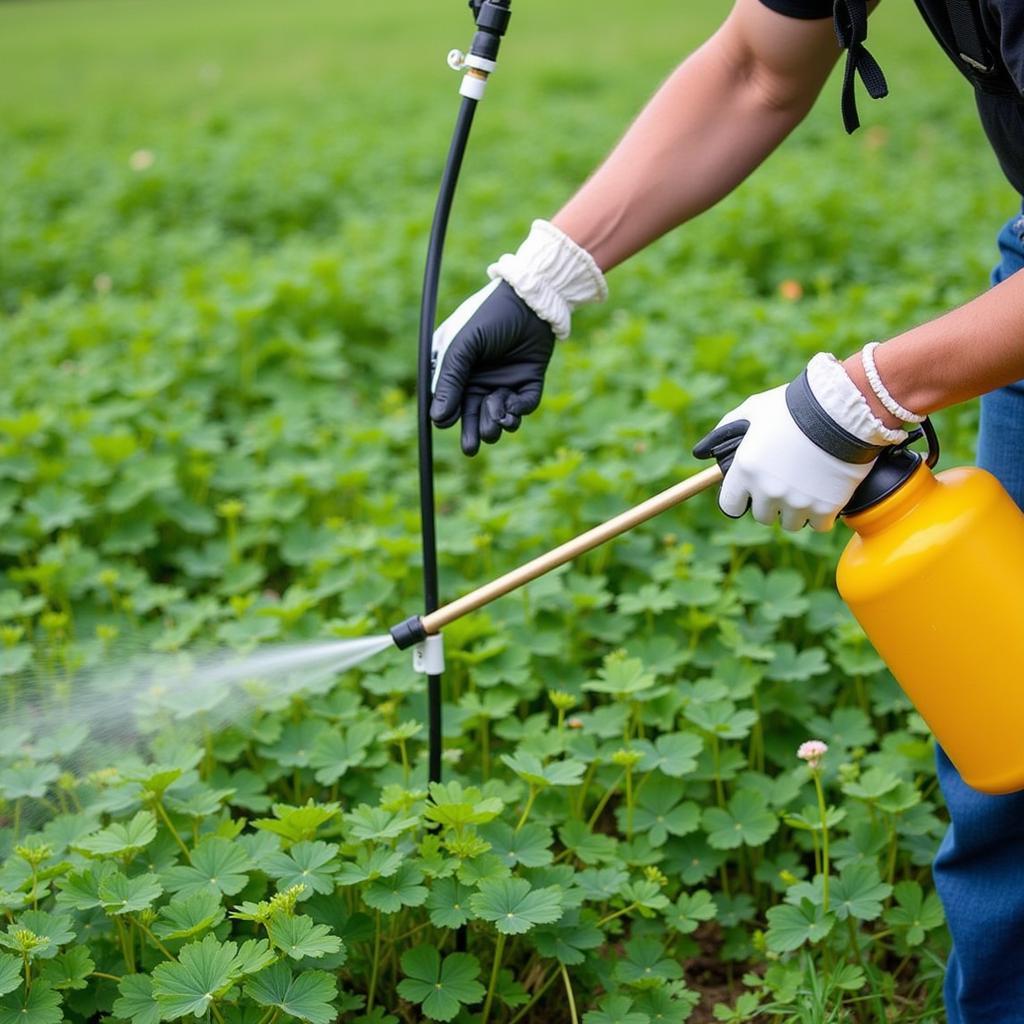A Food Plot Clover can be a game-changer for attracting wildlife to your property. In this comprehensive guide, we’ll delve into the benefits, planting strategies, and maintenance tips for establishing a thriving clover food plot. From understanding the nutritional value of clover to mastering weed control, you’ll discover everything you need to create a haven for deer, turkeys, and other animals.
Why Choose a Clover Food Plot?
Clover is a highly attractive forage for a variety of wildlife species, offering a rich source of protein and essential nutrients. Its palatable leaves and stems provide a valuable food source throughout the growing season, contributing to healthier and more robust animal populations. Besides its nutritional value, clover is also beneficial for soil health. As a legume, it fixes nitrogen in the soil, improving fertility and reducing the need for synthetic fertilizers. This makes it a sustainable and environmentally friendly choice for your food plot. It’s also relatively easy to establish and maintain, making it a perfect option for both novice and experienced food plot enthusiasts. Learn more about establishing a thriving clover patch on clover food plot.
Choosing the right clover variety is crucial for the success of your food plot. Consider factors such as your local climate, soil type, and the target wildlife species. Red clover, white clover, and crimson clover are all popular choices, each with its own unique characteristics. Red clover, for example, is known for its high protein content and drought tolerance, while white clover is a more persistent perennial that can withstand heavy grazing.
Planting and Maintaining Your Clover Food Plot
Preparing the soil is a critical step in ensuring the success of your clover food plot. Start by testing your soil pH and amending it as needed. Clover prefers a slightly acidic to neutral pH. Next, clear any existing vegetation and till the soil to create a fine seedbed. This will help the clover seeds establish quickly and compete effectively with weeds. Once the soil is prepared, broadcast the clover seeds evenly and lightly rake them into the soil. You can also consider using a seed drill for more precise planting.
 Planting clover seeds in a food plot
Planting clover seeds in a food plot
Watering your clover food plot is essential, especially during the establishment phase. Keep the soil consistently moist but not waterlogged. Once established, clover is relatively drought-tolerant, but supplemental watering may be necessary during extended dry periods. Regular mowing can also help to control weeds and encourage denser growth. Aim to mow the clover to a height of about 4-6 inches. You might want to explore different strategies for weed control in clover food plots.
Dealing with Weeds in Your Clover Food Plot
Weeds can be a major challenge in food plots, competing with clover for nutrients, sunlight, and water. Implement effective weed control strategies to ensure your clover thrives. Hand-pulling weeds is a viable option for small plots, while herbicides can be used for larger areas. Be sure to choose a herbicide that is safe for clover and follow the label instructions carefully. Pre-emergent herbicides can be applied before planting to prevent weed seeds from germinating, while post-emergent herbicides can be used to control existing weeds. Find out more about dealing with weeds by visiting killing weeds in clover food plots.
 Controlling weeds in a clover food plot
Controlling weeds in a clover food plot
Maximizing the Benefits of Your Food Plot Clover
Consider adding other plant species to your clover food plot to enhance its attractiveness and nutritional value. Chicory, for instance, is a great companion plant for clover. It provides additional forage and can attract a wider range of wildlife. You can find more information about mixing clover and chicory at chicory and clover food plots. Rotating your food plots can also help to prevent soil depletion and reduce pest and disease problems. Plant different crops in different areas each year to maximize the long-term benefits of your food plots.
“A well-maintained clover food plot is like a magnet for wildlife,” says renowned wildlife biologist, Dr. Sarah Miller. “It provides a consistent and nutritious food source that can significantly improve the health and abundance of local animal populations.”
Conclusion
Establishing a food plot clover offers a valuable way to enhance your property for wildlife. By understanding the key principles of planting, maintenance, and weed control, you can create a thriving food plot that attracts and nourishes a variety of animals. So, embark on this rewarding journey and witness the positive impact of a food plot clover firsthand. Explore suitable herbicides at herbicide for clover food plots.
FAQ
- What type of clover is best for food plots? (Red, white, and crimson are popular choices)
- When is the best time to plant clover? (Spring or fall, depending on the variety)
- How do I control weeds in my clover food plot? (Hand-pulling, herbicides, mowing)
- How often should I mow my clover food plot? (Maintain a height of 4-6 inches)
- What other plants can I include in my clover food plot? (Chicory is a good companion plant)
- How do I prepare the soil for a clover food plot? (Test pH, clear vegetation, till the soil)
- How much water does a clover food plot need? (Keep soil moist, especially during establishment)
“Investing in a diverse food plot, including clover, is a testament to responsible land management and a deep appreciation for wildlife,” adds Dr. Miller. “It’s a win-win situation for both the land and the animals.”
For further assistance, please contact us at Phone: 02437655121, Email: [email protected] or visit our address: 3PGH+8R9, ĐT70A, thôn Trung, Bắc Từ Liêm, Hà Nội, Việt Nam. We have a 24/7 customer service team.